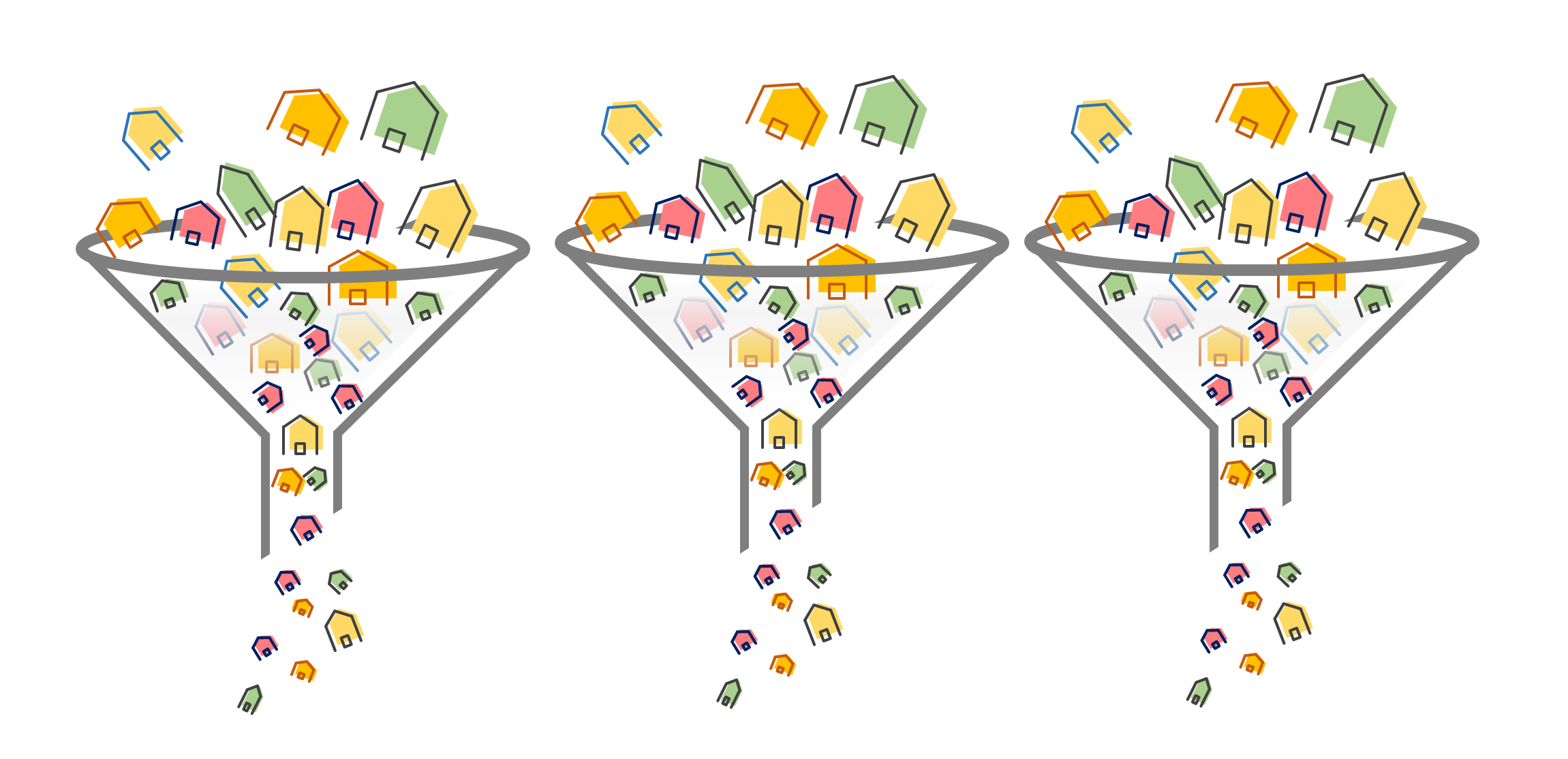
The ANHD Blog raises the profile of our issues, and educates our member groups, city decision makers, and the general public on our core issue areas. The ANHD Blog offers sharp, timely and effective commentary on key public policy issues, as well as our work and the work of our member groups.
All of our blogs are sorted based on the issues, projects, special tags, and dates they are associated with, and you can use the dropdowns below to filter through our blogs based on these tags. Additionally, you can do a general search through our blog, using the search bar the right. If you can’t find what you are looking for, email comms@anhd.org.
Does Trickle-Down Affordability Justify the Mayor’s Zoning Policy?
Policy makers should stop making supply and demand affordability arguments to justify their high-end market-rate development plans.
Mayor de Blasio made a common argument during an appearance on WNYC last year about why building high-end market-rate housing makes the city more affordable. "The scarcity of housing [in gentrifying neighborhoods like Bed Stuy and Bushwick] actually exacerbated the displacement," he said. "If you're not adding to the supply, you have a pressured supply of housing, more and more people want to be there — of course that creates a massive displacement pressure. We've got to have an honest conversation in this city. If people think that no rezoning will just freeze paradise in place and everything is going to be wonderful, that is a fundamental misunderstanding of the last 20 years in this city."
The Mayor's supply and demand argument sounds logical — New York City has a tight housing market and a growing population, so adding to the supply of housing at the high end should help address the demand problem for everyone, including low-income people because some units will trickle down to lower affordable levels. In housing policy terms, this is called the "filtering effect," and it is often used to justify the idea that we need to build market-rate housing wherever and whenever we can. We hear this argument from policy makers all the time, especially as one factor to justify a controversial neighborhood rezoning.
But is the Mayor right? Are rezonings in neighborhoods such as Inwood, Williamsburg, or Bushwick that are designed to encourage a surge of market-rate development a win/win? Does building any new market-rate housing create the opportunity for new units to meet the high demand for housing, including some trickle-down affordability? And, does this benefit comes on top of the affordability that is immediately added to the local neighborhood because of the City's Mandatory Inclusionary Housing requirements??
Probably not. Here's why.
Trickle-down affordability, or filtering, is a difficult issue to evaluate since housing markets are complex. But recent studies that looked at the issue with a national lens, including from the Federal Reserve Board and Harvard University Joint Center for Housing Studies, found that building high-end housing has only a very small and slow impact on affordability. New high-end units are effective at moderating the increases at the top end as new vacancies hit the market, but these vacancies rarely trickle down to lower-rent units. And, two studies from the University of California in Berkeley and Syracuse University that included a specific analysis of the impact of building high-end housing in densely-built, hot-market cities like ours found almost no impact at all on affordability

Building high-end, market-rate housing probably doesn't create a trickle-down benefit for low- and moderate-income people in New York City. Our housing market has a very specific set of circumstances — we are a densely-built, apartment-building centric city with a very hot real estate market, a minuscule vacancy rate, a growing population at all income levels, and an especially acute shortage of housing affordable to low-income people. There may be legitimate policy arguments that other places in the country with different circumstances should loosen their housing development rules to address affordability, but New York City has been building an average of almost 20,000 new units of market-rate housing every year for the past 20 years. And the data, scholarly analysis, and local residents' lived experiences suggest that it has not made our city more affordable. There are places in the city where our regulatory code has severely restricted density and housing supply, but those places do not include Inwood (which is being rezoned) and do include most of Staten Island (which is not being rezoned).
It's not that the City should stop encouraging development. The same studies mentioned above agree that the best and probably the only way to have an impact on affordability is to build affordable housing, so Mayor de Blasio is right to focus there. We also need some market-rate development. But, each of those policies must be justified on their own terms. Policy makers should stop making supply and demand affordability arguments to justify their high-end market-rate development plans.
What has made most of the recent neighborhood rezonings proposed by the de Blasio Administration controversial is local residents' fears that the rezoning will make displacement pressure worse, not better. This is a legitimate concern; incentivizing a critical mass of new high-end market-rate housing can bring a wave of new residents with greater economic power who will both compete for the local housing and encourage local landlords to raise rents. This "secondary displacement" concern is especially legitimate when the City chooses — as it almost always does — to upzone low-income neighborhoods of color, which are especially vulnerable to displacement pressure. As a result, community members can't help but feel that their political establishment is too responsive to the powerful real estate industry, and that the terms of the housing policy conversation — which are overly focused on market-rate development — are set by the realities of power instead of the reality vulnerable New Yorkers see in their neighborhoods.
If the concern about growing secondary displacement pressure is legitimate and new market-rate housing doesn't create any affordability benefit, then the designated affordable units created by the Mandatory Inclusionary Housing requirements on their own must be enough of a benefit to the local residents to justify the rezoning. However, the current Mandatory Inclusionary Housing requirements in many neighborhoods are good, but still not enough without significant additional affordability benefits, rendering the trickle-down affordability justification deeply flawed. An alternative approach would be for city policy makers to take on the tricky challenge of upzoning wealthier neighborhoods with more economic and political power that are less vulnerable to secondary displacement pressure, and where the higher market-rate rents would cross subsidize more affordable units under Mandatory Inclusionary Housing.
So, Mr. Mayor, we commend you for much of your ambitious affordable housing development policy. But, you shouldn't use the affordability crisis to justify your market-rate policy. That leads to questionable policy decisions that exacerbate neighborhood conflict and does not actually solve the affordability crisis.

Want to talk more about Trickle-Down Development? Join us Thursday, April 11th at our 9th Annual Community Development Conference where our Afternoon Policy Plenary will be about just that! Click here to register





